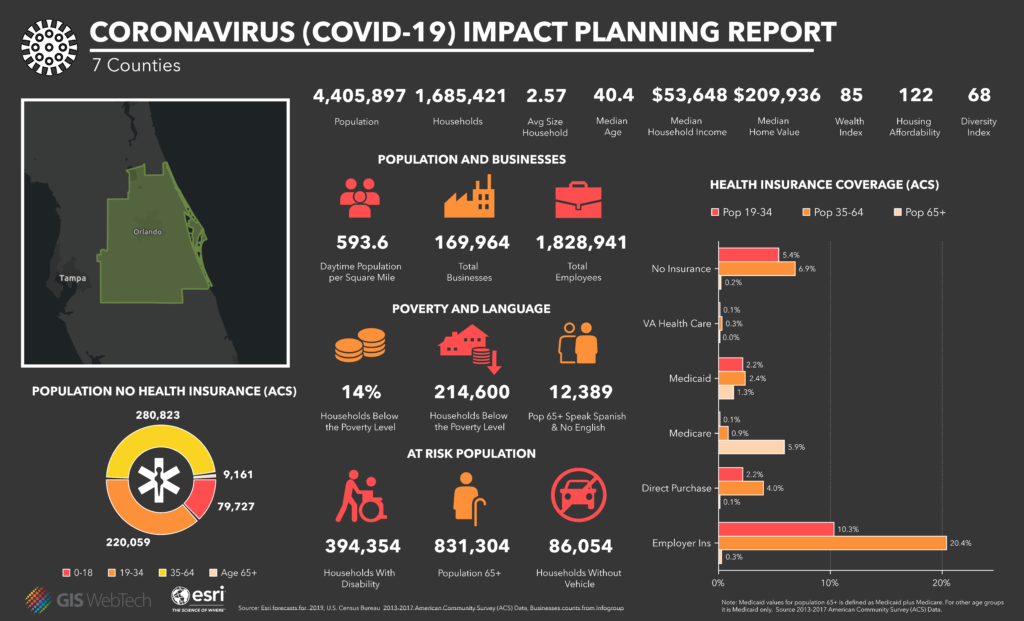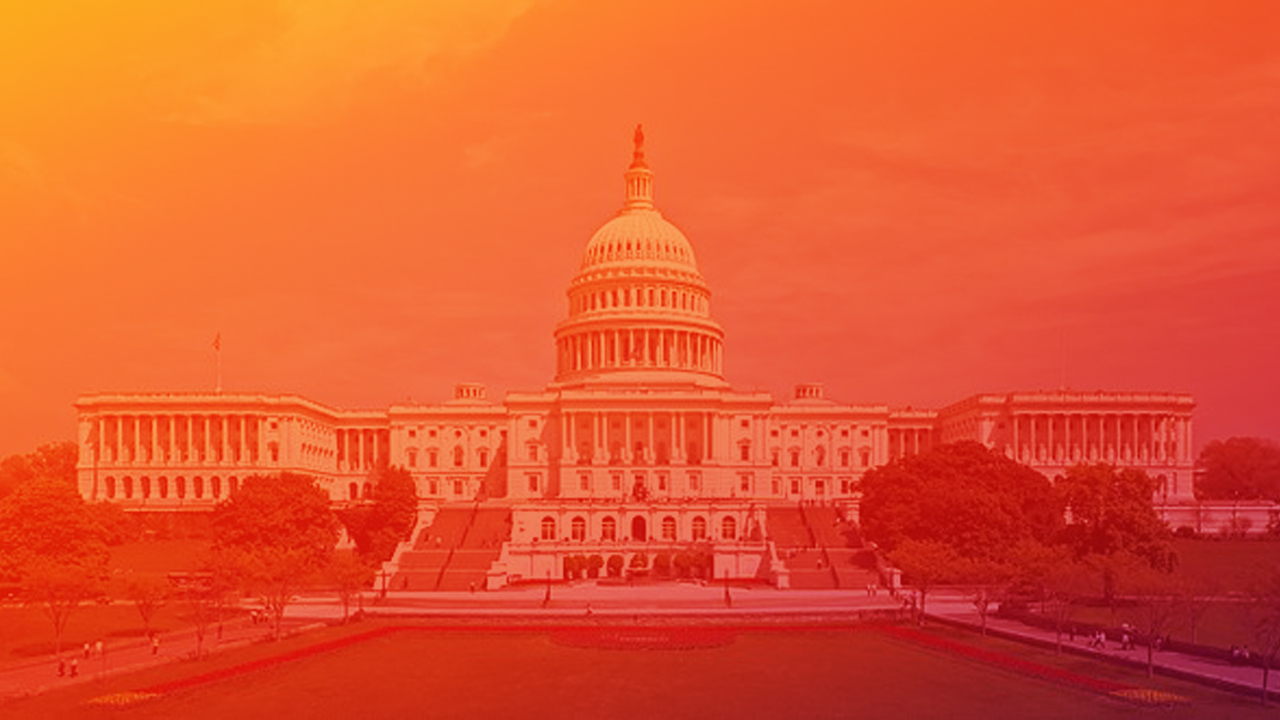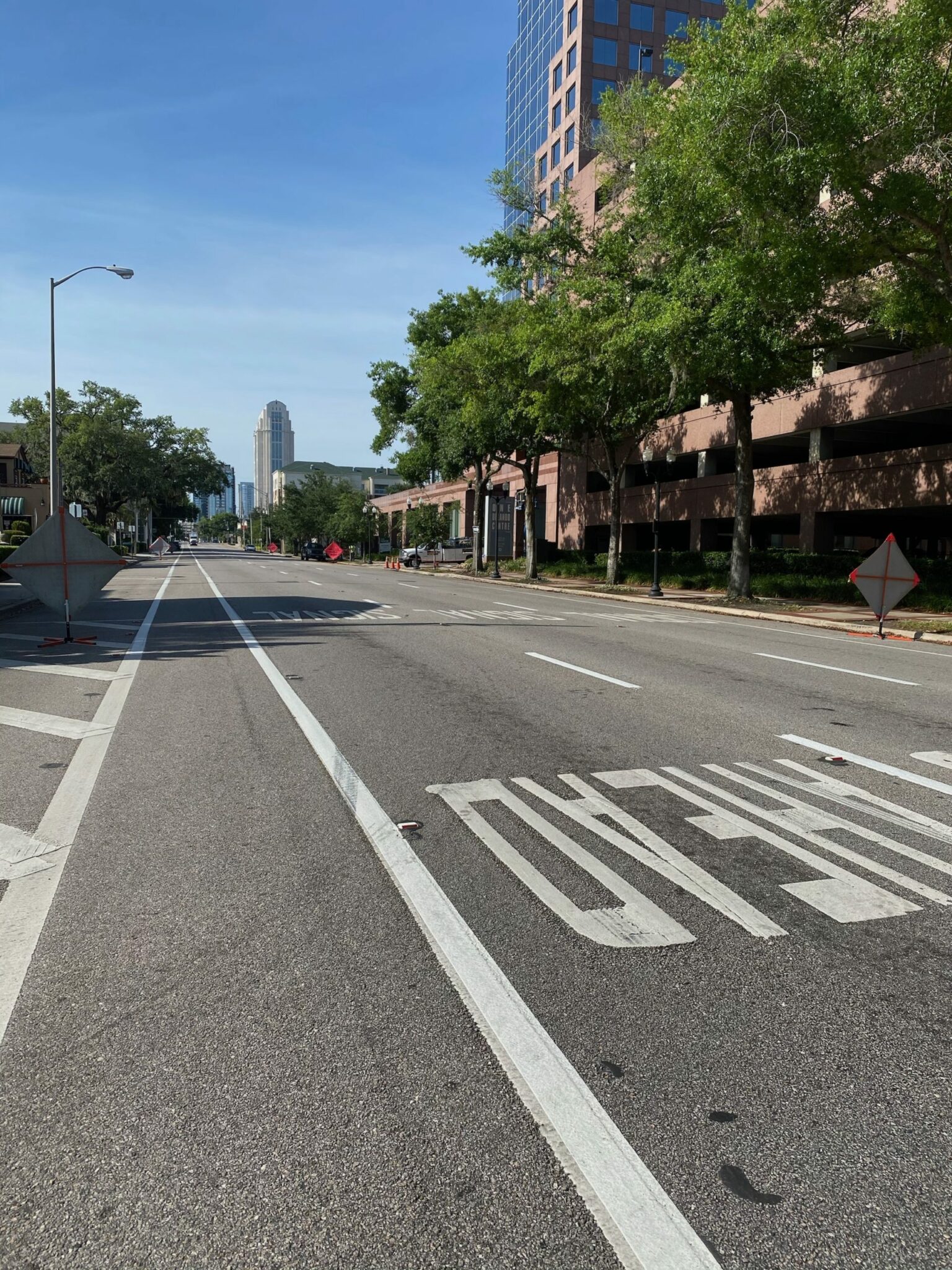A Coronavirus (COVID-19) Impact Planning Report highlights the most vulnerable populations from both a health and economic standpoint.

As the community continues to take steps to reduce the spread of the novel coronavirus in the Orlando region, the Orlando Economic Partnership aims to provide insightful data that can be used to identify the most vulnerable areas in the region and assist those planning for impacts due to COVID-19.
A Coronavirus (COVID-19) Impact Planning Report for each of the seven counties located in Central Florida can be found in the COVID-19 Resource Center. This report highlights the most vulnerable populations from both a health and economic standpoint and provides high-level statistics for an entire community, highlighting the most relevant demographic and economic characteristics for households likely to be impacted by this pandemic.
Overall, there are 4.4 million people living in the seven-county region that includes Brevard, Lake, Orange, Osceola, Polk, Seminole, and Volusia Counties:
- 19 percent are age 65+ (831,000 people).
- 14 percent do not have health insurance (617,000 people).
- 0.2 percent are age 65+ and have no health insurance (9,000 individuals).
This is the population in Central Florida most at risk of suffering serious health implications from contracting the virus.
Simultaneously, the impact report highlights statistics indicating the population likely to experience fall-out from necessary social distancing measures and loss of economic activity. Almost 215,000 households (14 percent) in Central Florida fall below the poverty level.
Slightly more than 31 percent of households below the poverty level (67,000 households) are families with a single (male or female) householder. These are the families that will struggle the most with continued school closures, rely on free or reduced school lunches and will need childcare assistance in the weeks or months ahead.
Approximately 86,000 households in the region do not have a vehicle. These households may rely on public transportation to grocery shop, go to work, or reach a doctor’s office; all necessary activities that increase the risk of spreading the virus.
While the impact report focuses on households below the poverty level and provides a more general overview, other sources show that 45 percent of households in the region are living from paycheck to paycheck. As the economic fall-out from coronavirus impacts the regional economy, this broader group of households, defined as not being able to withstand an unexpected $400 hit to their budget, will be exposed economically due to layoffs and furloughs that are expected to increase in the weeks ahead.
The Neighborhood Opportunity Index (NOI), produced by The Polis Institute, uses data to spatially highlight which areas are the most vulnerable at the neighborhood level. This tool is unique to Central Florida and maps the exact neighborhoods that are the most at risk from both a health and economic standpoint.
View the NOI below. The full version can be found here and maps neighborhoods by household income, population below 200 percent of the federal poverty level (a measure that more closely relates to the number of households living paycheck to paycheck), and unemployment rate among other indicators.
These tools are meant to provide guidance and context for understanding where impacts of coronavirus are likely to be felt hardest in Central Florida. Extended analysis on the potential economic impact will be available as more data is released.
For questions or to submit other resources please email BusinessHelp@orlando.org.
Please visit Orlando.org/Covid19 for a one-stop shop with information, business resources, policy analysis, impact reports, links to SBA resources and stories about what companies around our region are doing to prepare and cope.






